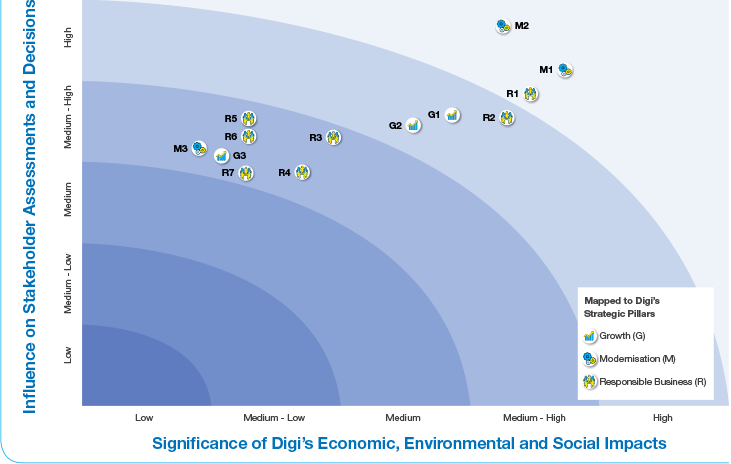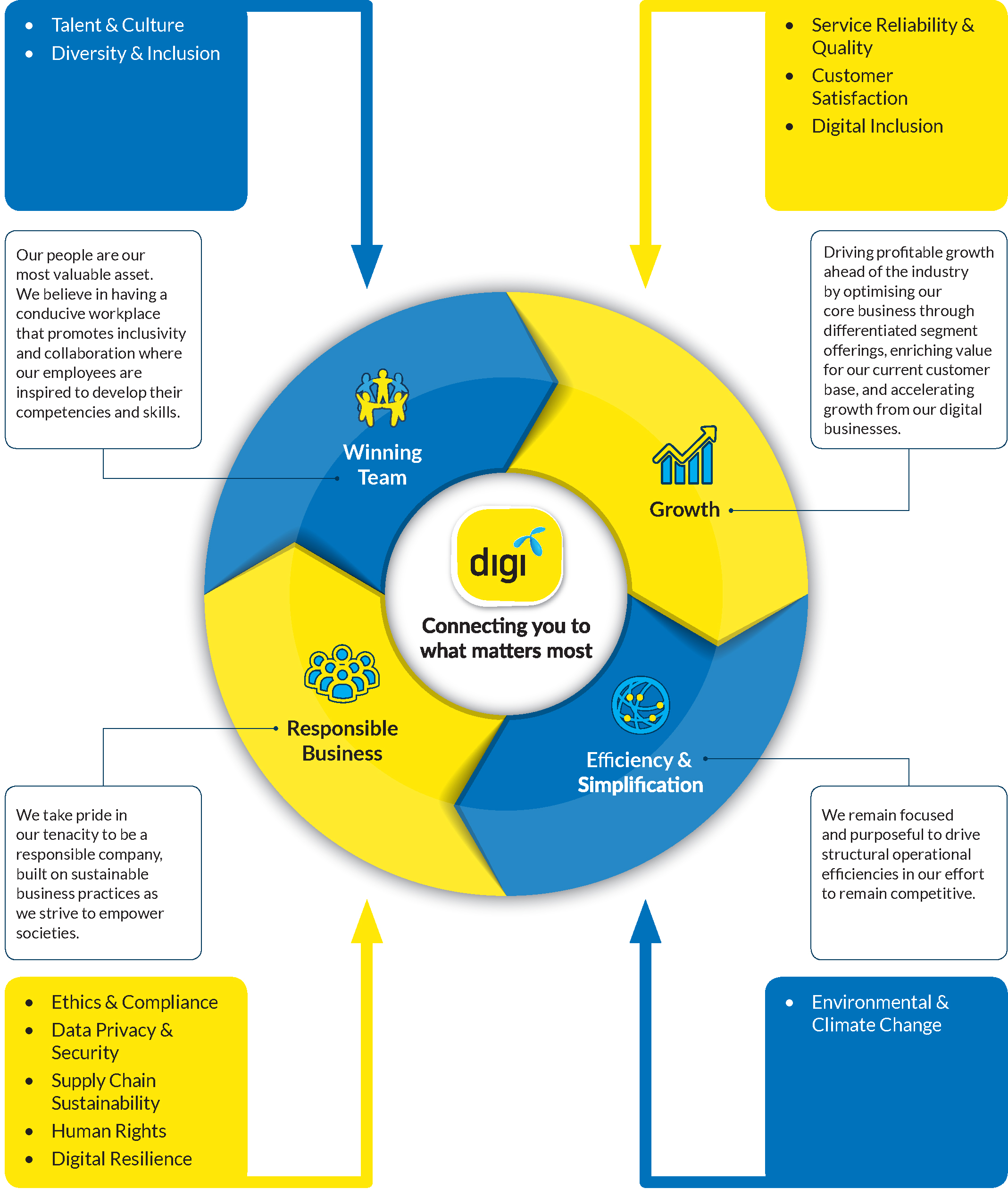MATERIALITY AND
OUR STAKEHOLDERS
In FY2020, we refreshed our materiality assessment to substantiate the materiality of economic, environmental, social and governance risks (known as “sustainability matters”) that are relevant to our business and stakeholder’s expectations. Our materiality assessment is guided by our risk management framework as well as Bursa Malaysia’s Sustainability Reporting Guide (2nd Edition) and Bursa Malaysia’s Toolkit. To understand our stakeholders’ perspective, we engaged with a wide range of external and internal stakeholders to further evaluate and shape our materiality matrix. Subsequently, these stakeholders’ findings are mapped against Digi’s strategic priorities and its business environment.
- Cross-functional deliberation sessions
- Basis for review – Internal business environment, business strategy, external trends and stakeholders’ feedback
- Identification of 25 sustainability matters for further review
- Mapping of sustainability matters against Digi’s three Strategic Pillars
- Engaged with representatives from 13 stakeholder groups
- Representatives from each stakeholder group rated the sustainability matters identified based on a 4-point Likert scale
- Average scores were tabulated based on equal-weighted approach applied across all stakeholder groups
- Stakeholders’ feedback and concerns were also gathered to better understand their needs and expectations in terms of sustainability management and reporting
- The magnitude of each sustainability matter is assessed through our impact assessment
- Representatives from various business functions deliberated the sustainability matters scoring
- To ensure integration between our risk and materiality assessment, Digi’s enterprise risk parameters were used to guide us in scoring the likelihood and consequence of each sustainability matter
- Each sustainability matter is assessed based on the impact on revenue, cost, regulatory, brand and reputation, as well as health, safety and environment across a specific timeframe
- The findings from both exercises were tabulated and analysed
- The outcome of the analysis was presented in our materiality matrix, through which the top sustainability matters were determined
- The sustainability matters were further consolidated into 13 broad categories for discussions in this report
- Upon finalisation of the materiality assessment, it was presented to the Board of Directors for approval











